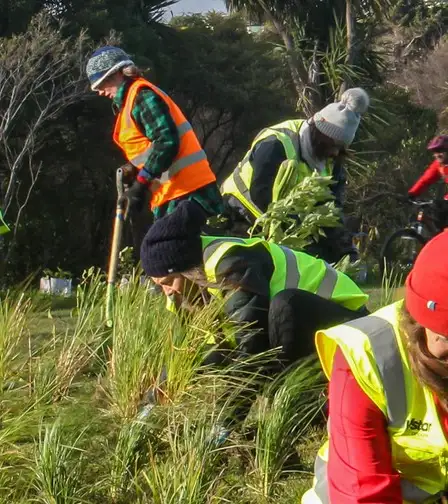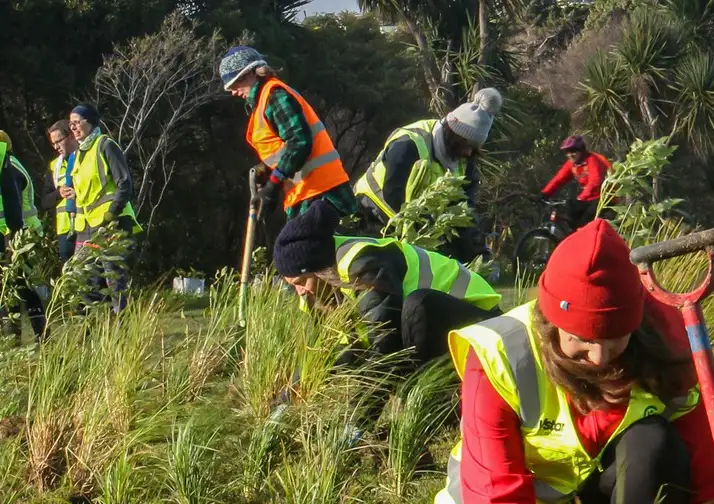Porirua streamside planting project



Porirua has 588 kilometres of streams. To put that in perspective, the drive from Wellington to Hamilton is about 523 kilometres.
That’s a lot of streams, and over the past twenty years, their health has been declining. So has the health of Te Awarua-o-Porirua Harbour, the dual estuaries all those streams lead into — with the equivalent of 7,000 ten tonne trucks of sediment entering the harbour for each of the last five years.
Te Awarua-o-Porirua Harbour is a taonga of great significance to local iwi Ngāti Toa and the city as a whole. Having a healthy harbour again has long been a goal for both iwi and council. So council, in partnership with Ngāti Toa, set out on a major streamside planting project to improve the health of their streams and harbour, in a ground-breaking initiative combining leading-edge technology, scientific expertise and strong iwi and community partnerships.
There’s a lot of benefits to planting beside streams. It helps slow sediment from entering streams, removes pollutants (the plants use them first) and reduces flooding (stream banks absorb and hold the water). It provides a new home for declining native bird and lizard species that have lost habitats, and planting helps manage extreme water temperatures which kill the helpful insects improving water quality. And, of course, planting is also a crucial way to manage climate change.
But with 528 kilometres of streams, where to start? Council needed reliable information to inform both short and long-term decisions on where and how to prioritise planting. This information also needed to be easy to understand for everyone helping with the project — from staff to community groups to iwi.
So, working with engineering company Cardno and using free public data, the team analysed a huge range of things including land use and ownership, weed and pest control locations, and pollutant data. Then they worked out all the planting costs and management techniques including site prep, fencing, plants and maintenance. Next, they combined all this information to give a priority score to every 100 metre section of their 588 kilometres of streams. The result? For every stream in Porirua, council now knows exactly what’s needed to restore it to health, how much it’s going to cost, and what planting to prioritise.
So far, the project has put more than 140,000 plants in the ground — with plans to plant another six million(!) over the next 20 years. It’s a community-wide effort, with volunteer groups, community partners and schools all getting stuck into the mahi. Council have also established stream care and land care groups to get residents actively involved in their own streams.
The project is well ahead of schedule, thanks to the decision from council to up their funding, as well as $3m funding from central government. It’s a testament to the strength of local partnerships and collaboration, with everyone pulling together to help out — including Porirua Council, Ngāti Toa, Wellington Water, Wellington City Council and, crucially, the community itself. It’s this combined local effort that will ensure their dream of clean streams and a healthy harbour becomes a reality.